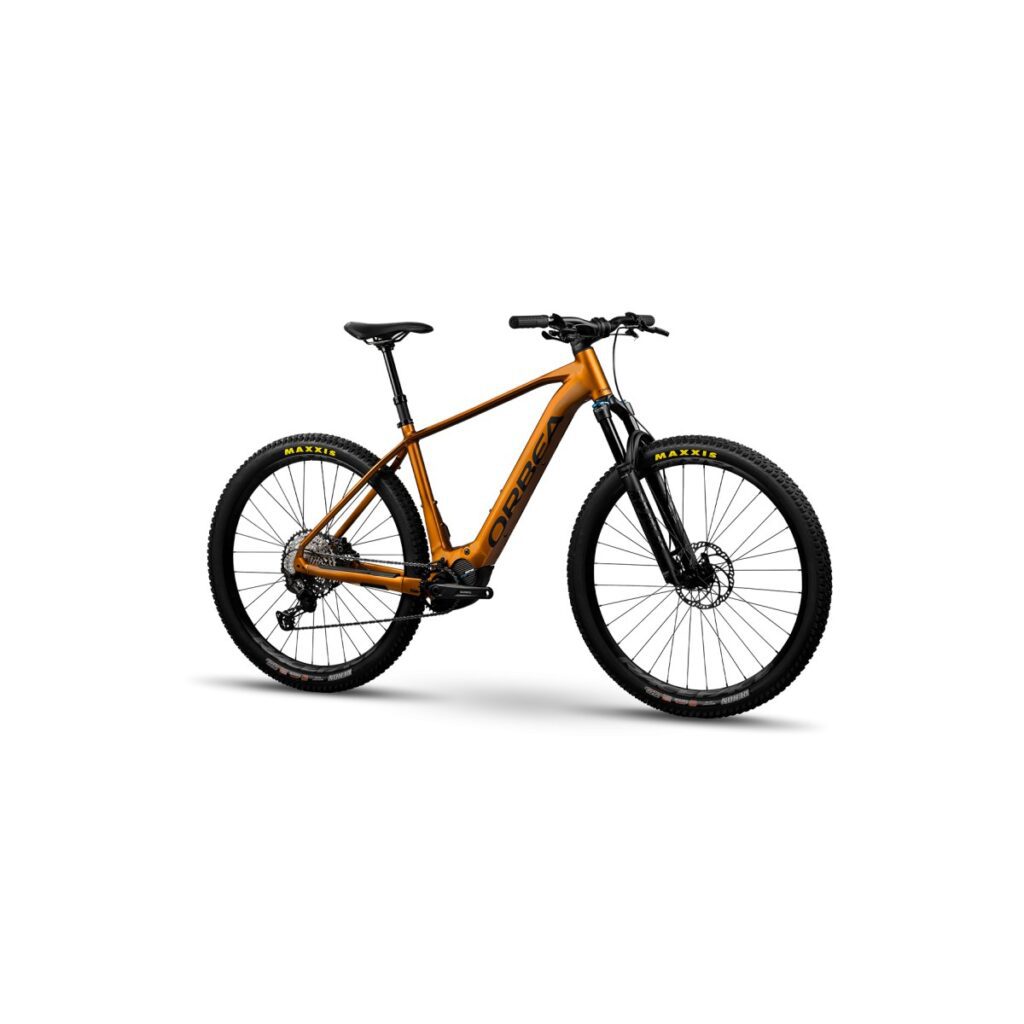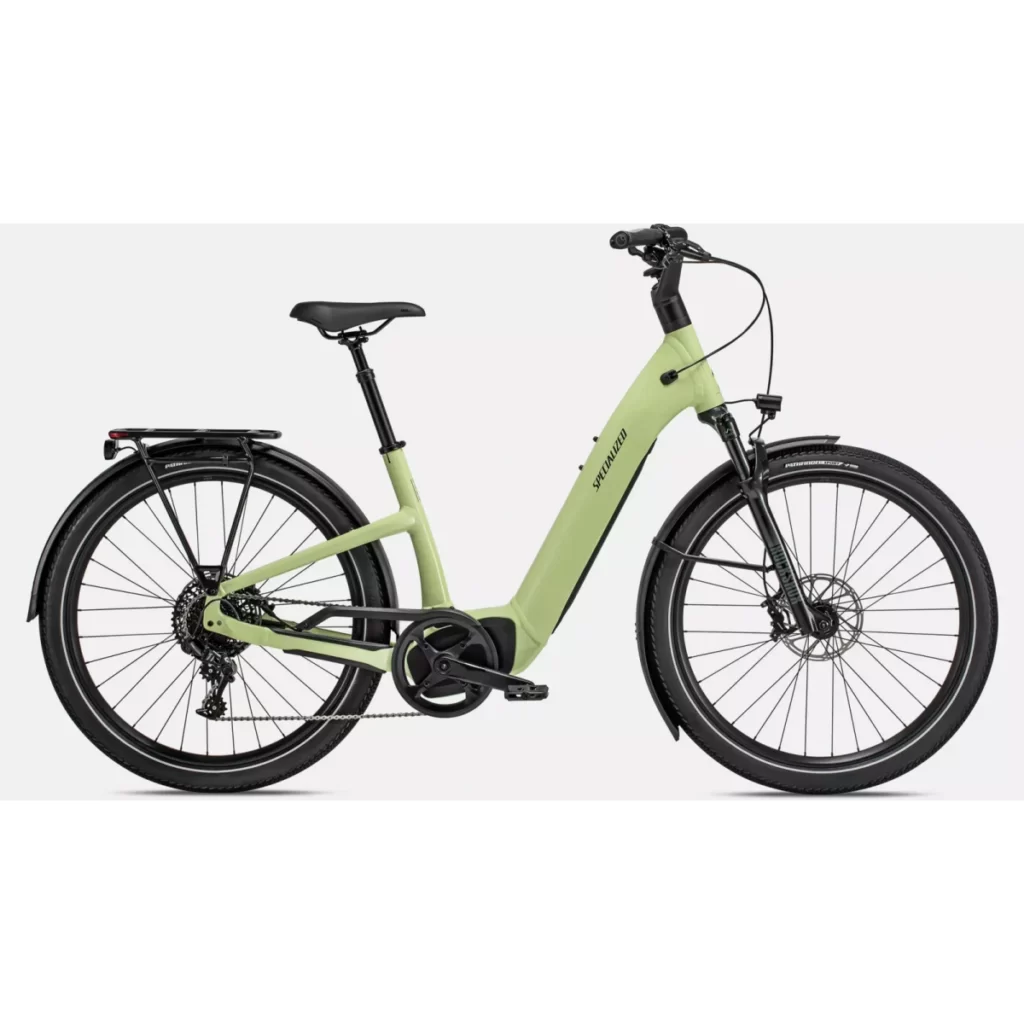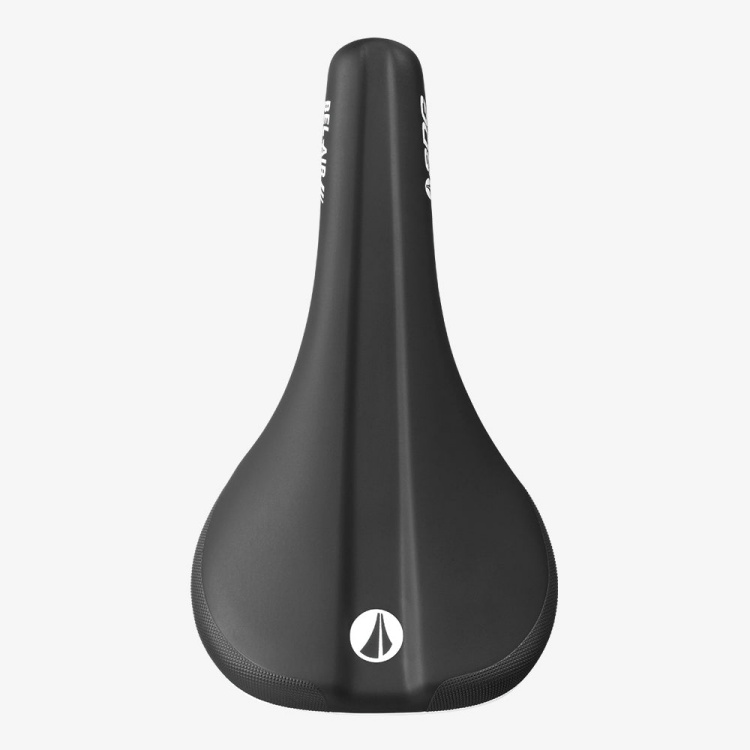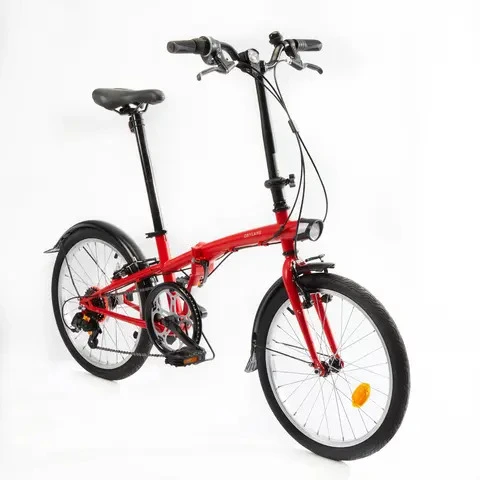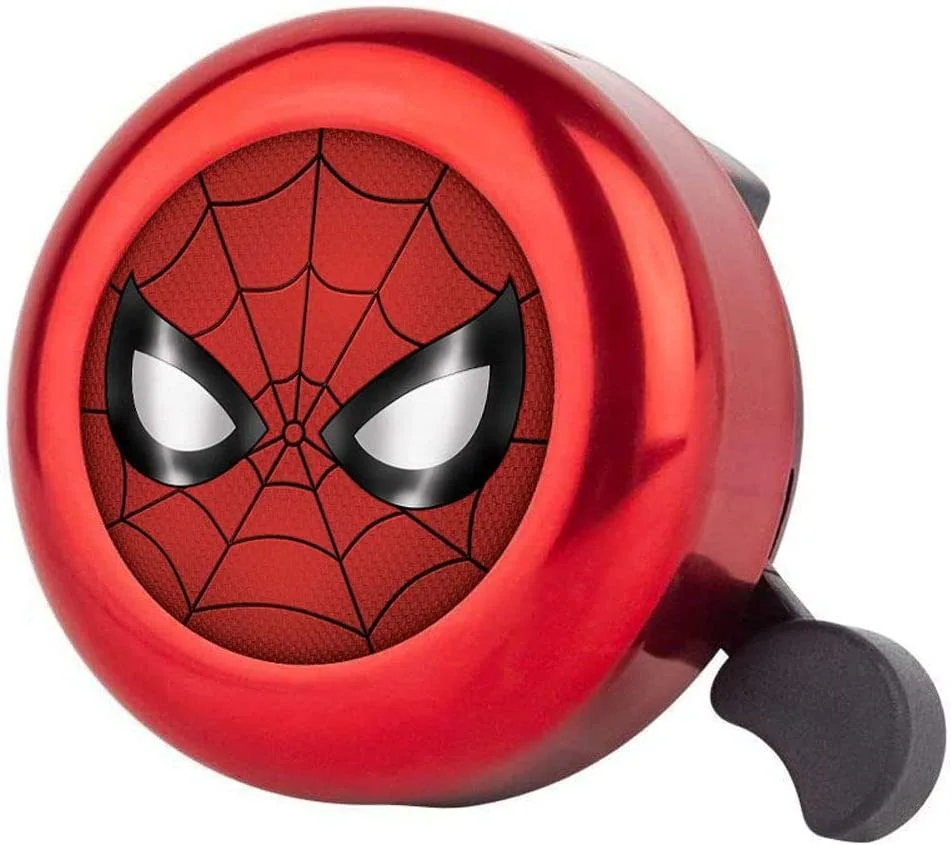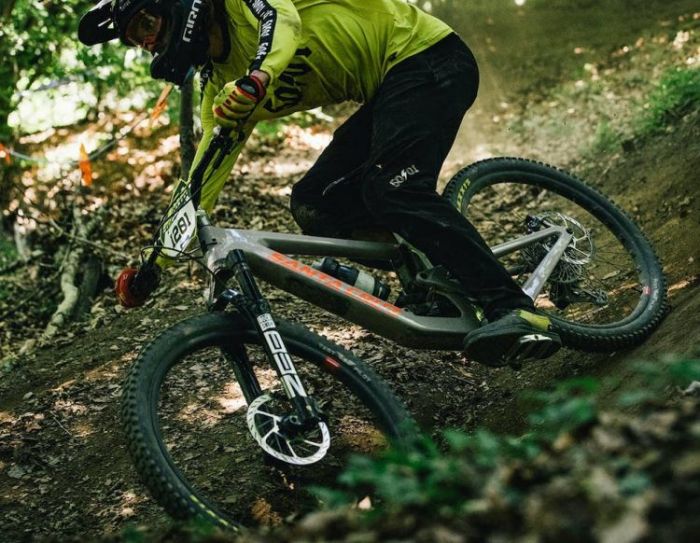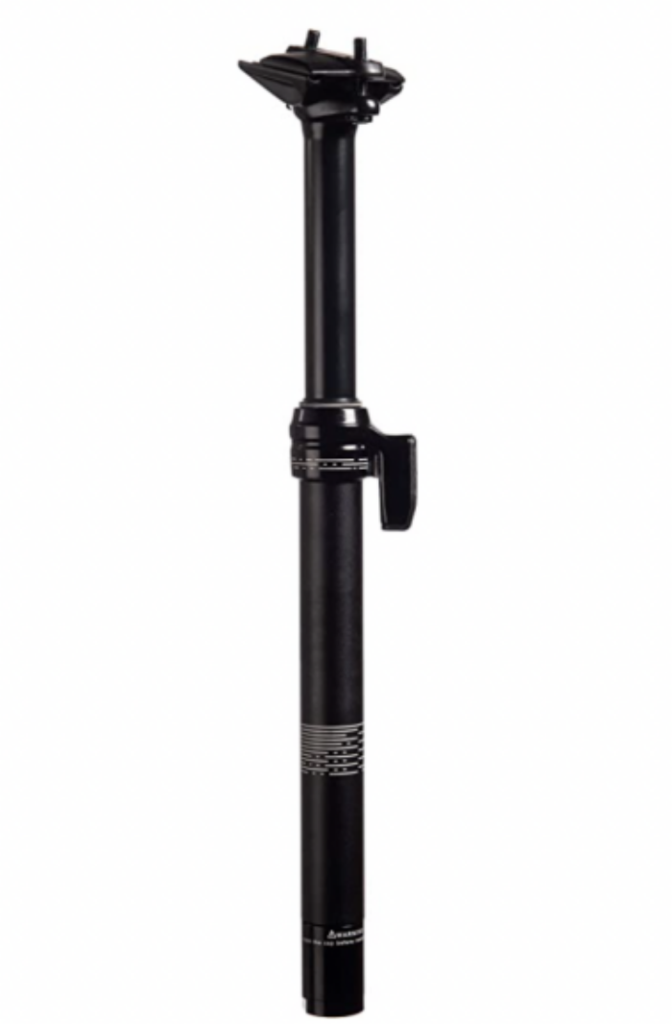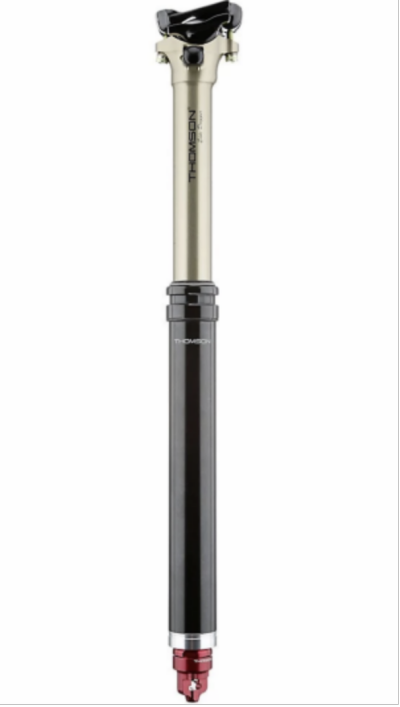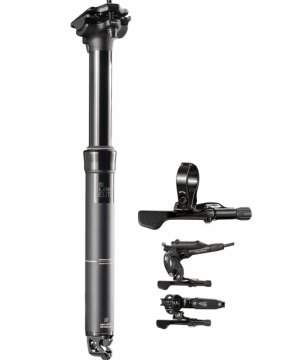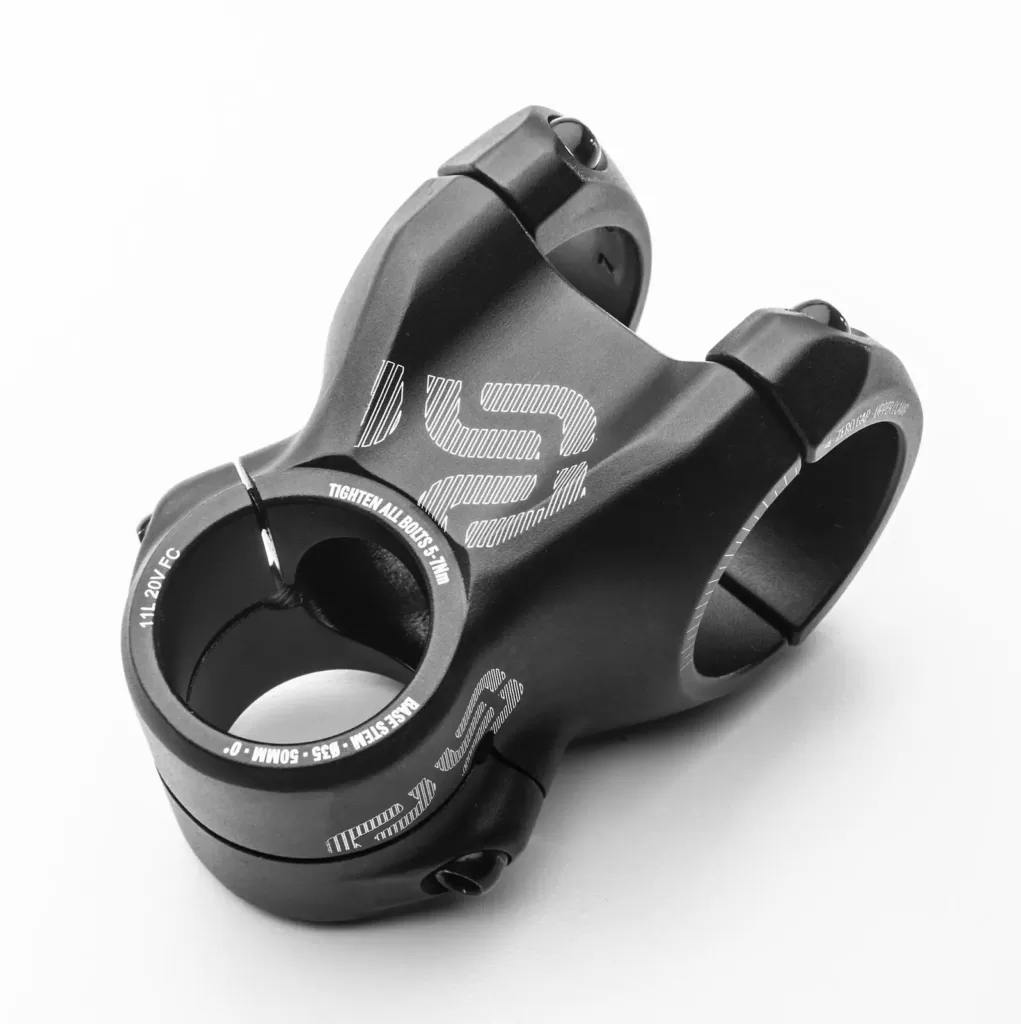We’ve selected 15 best mountain bikes handlebars for your reference.
When it comes to mountain bikes, we naturally think of the handlebars, and having the right handlebars can make all the difference to the ride. Whether you’re having a mountain bike race or a simple casual trail ride, you need handlebars to provide stability and control, while also taking into account comfort.
There are many different kinds of mountain bike handlebars, each with its advantages and disadvantages. Accordingly, we found fifteen different types of handlebars at different price points through screening. Whether it is a flat and wide handlebar or a relatively narrow handlebar, each handlebar has its unique advantages and disadvantages.
The most important thing is to find the handlebar that best suits your style and preference. We’re sure you can find the right handlebars for you on our list. Of course, if you are a road rider, you can check out our Best road bike handlebars.
If we’ve been helpful to you, share it with more friends!
Best Mountain Bike Handlebar Comparison
- Santa Cruz Carbon 800 Riser Bar ($170)
- Gusset S2 ($50)
- Specialized Traverse SL ($170)
- PNW Range Gen 3 ($69)
- PRO Tharsis XC ($220)
- Race Face Next R 35 ($179.99)
- Chromag Fu50 Handlebar ($94)
- BUCKLOS 25.4/31.8mm Handlebar Flat/Riser Bar ($39.99)
- PNW Components Range Handlebar ($69)
- Renthal Fatbar Carbon 35 Handlebar ($173.9)
- Raceface Turbine R Riser Handlebar ($89.99)
- RaceFace Respond Riser Mountain Bike Handlebar ($31.95)
- UPANBIKE Mountain Bike Road Bike Handlebar ($24.99)
- OUTAD Bicycle Handlebar ($19.99)
- Jessica Acekit Handlebars For Mountain Bikes ($25.99)
1. Santa Cruz Carbon 800 Riser Bar ($170)
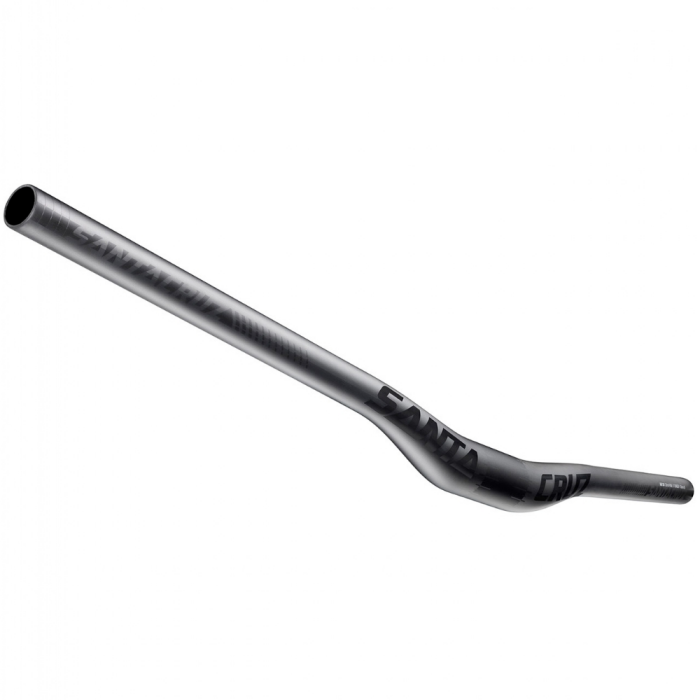
- Width: 760/800mm
- Rise: 20mm
- Scanning angle: 9°
- Material: carbon fiber
- Clamp: 35mm
- Weight: 238/241g
- Type: Downhill
- What we like about it: The classic look and comfortable shape.
- What we don’t like about it: It’s expensive.
This is the product of extreme lightness, with a width of 800mm at just 233g, which is amazing even in this category of carbon fiber. If you’re about to cut a bit off along the cut line on the handlebars, note that they also come in a 760mm version. The carbon fiber has great shock absorption properties, and with the classic look can maintain a comfortable shape with excellent control at all times. It’s worth noting that the handlebars are entitled to a lifetime of repair.
But I have to mention this point, that is, the price is relatively expensive. This is why most riders are not willing to pay for such a great handlebar. If you are like me and don’t want to spend a lot of money to upgrade your handlebars, you can check out this next one. In a nutshell, Santa Cruz Carbon 800 riser bar uses advanced technology and classic geometry, it is a versatile handlebar that can absorb shock and relieve arm fatigue while still providing a good handling experience.
2. Gusset S2 ($50)
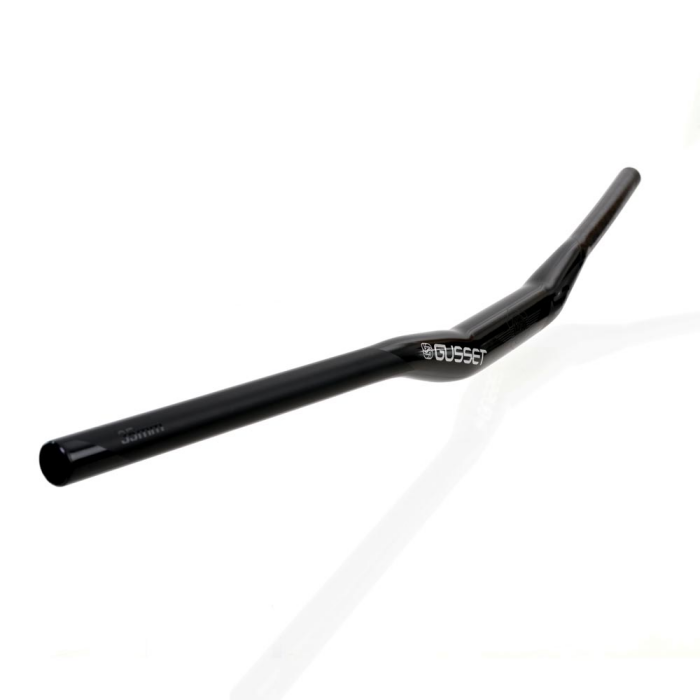
- Width: 800mm
- Rise: 10-50mm
- Scanning angle: 5°
- Material: 7075 aluminum alloy
- Clamp: 35mm
- Weight: \
- Type: Off-road
- What we like about it: Excellent rigidity and affordable price.
- What we don’t like about it: It’s not suitable for long rides and rough roads.
This is a wide and tough handlebar, if you need a super strong handlebar without spending a fortune, this is the one for you. 7075 aluminum construction provides perfect stiffness that is incredible. It has excellent feedback for low-speed precision riding and short runs.
However, there may be some compromises on long distances or very rough roads. The stiff handlebars can’t absorb too much road cushioning, which can make your hands feel numb. If you need a comfortable handlebar for long distances, check out the Santa Cruz Carbon 800 Riser Bar for carbon fiber handlebars. There are pros and cons to everything, and the stiff tubing makes it perfect for short, fast rides. And, the inability to deform allows for more precise steering.
3. Specialized Traverse SL ($170)
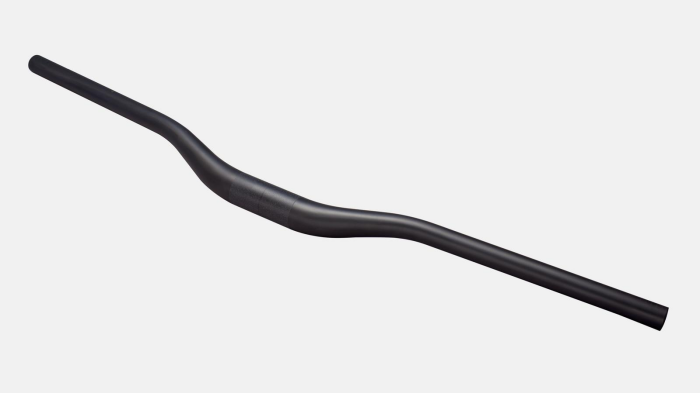
- Width: 800mm
- Rise: 30mm
- Scanning angle: 6º upsweep, 8º backsweep
- Material: carbon fiber
- Clamp: 35mm
- Weight: 227g
- Type: Downhill
- What we like about it: The lighter weight and comfortable grip.
- What we don’t like about it: The low rise height compared to the downhill handlebars.
The 227g weight is very competitive among other enduro and trail handlebars, and the 800mm cuttable handlebar will fit most riders. The classic geometry (6º upsweep, 8º backsweep) is a good balance of power and stability, even when hammering hard rocky trails without numbness in the hands. Notably, Specialized has added a frosted texture to the brake mounting position, which is a great design to prevent brake lever slippage.
Currently, there is only a 30mm rise, which is not suitable for all players, but this is only its first 35mm handlebar. If needed you can wait for the successor or choose the previous one Gusset S2 The Gusset S2 has a wide range of options from 10-50mm.
In short, high rigidity and precision give it excellent quality, and it can keep Shu even on rugged trails. But most importantly, people who like its brand do not find it expensive.
4. PNW Range Gen 3 ($69)
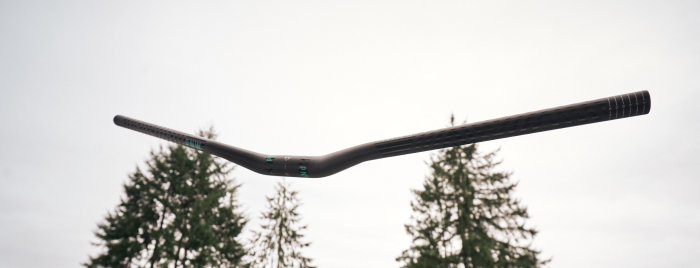
- Width: 800mm
- Rise: 30mm
- Scanning angle: 5º upsweep, 10º backsweep
- Material: 2014 aluminum alloy
- Clamp: 31.8/35mm
- Weight: 314g/310g
- Type: Descent
- What we like about it: Excellent shock absorption and comfortable seating position.
- What we don’t like about it: The advantages aren’t extreme and it’s not race-appropriate.
This is a great shock-absorbing handlebar, they do a good job of muting trail chatter and are perfect for being mounted on a short-range mountain bike. The geometry is perfect, with a high rise and relaxed sweep angle for all classic singletrack, allowing the arms and shoulders to be in a relaxed position and my back to stay upright for long periods. And the new generation is even 25g lighter on top of being 20mm wider.
Unfortunately, it’s a compatible handlebar with the cushioning performance of carbon fiber and the rigidity of aluminum, but neither is very good at it. If you’re a racer looking for the ultimate, then check out the highly cushioned handlebars of carbon fiber above and the highly rigid handlebars of 7075 aluminum. But I have to say, if you are just a cycling enthusiast like me, I think this design with both would be perfect for you.
5. PRO Tharsis XC ($220)

- Width: 700-740mm
- Rise: 0mm
- Scanning angle: 5º upsweep, 9º backsweep
- Material: carbon fiber
- Clamp: 35mm
- Weight: 130g
- Type: Trail
- What we like about it: It’s stiff enough and has a clear road feel.
- What we don’t like about it: Poor cushioning.
This handlebar sits at the top of the PRO series and stiffness is synonymous with it. No matter which direction you push it, he doesn’t deflect and you get a clear ground feel. The upsweep and backsweep are very small, giving it an extremely lean look. It’s very light, 740mm long is perfectly adequate for XC riders and the cut marks extend to 660mm.
But on hard rock gardens and icy winter trails, the aggressive feel can quickly take a toll on your wrists, palms, and even arms, and installing the right grip is critical. If you need a handlebar with better cushioning, check out the above Santa Cruz Carbon 800 riser bar, even though it’s not as stiff. If you are a fast-riding enthusiastic rider, I think this handlebar is perfect for high-speed handling and short sprints.
6. Race Face Next R 35 ($179.99)
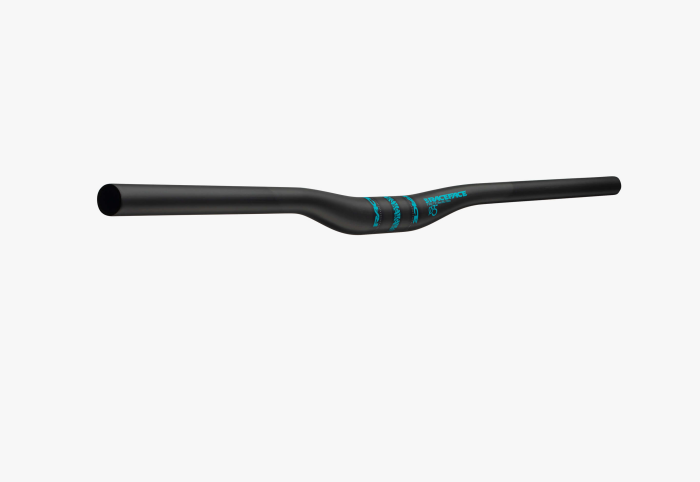
- Width: 760mm
- Rise: 10mm;15mm
- Scanning angle: 5º upsweep, 8º backsweep
- Material: carbon fiber
- Clamp: 35mm
- Weight: 180g
- Type: Downhill
- What we like about it: Lighter weight and comfortable sitting position.
- What we don’t like about it: The short length of the rod.
The Race Face Next R 35 maintains a very lightweight for its price point. The right width is perfect for downhill sections, providing you with a high level of steering control. Next Ruses’ unidirectional densely packed carbon fiber allows it to be light enough to be thin and remain strong and durable. It also has reinforced stem clamps and control areas, angled to keep the entire body in a more neutral position for extended comfort.
Even though the bar is 760mm long, I had to hold my hand on the edge of the bar to feel the perfect handling experience. I think a wider design width option would be more appropriate. While Specialized Traverse SL The 800mm width offered would probably be more suitable for taller people. Overall, it’s a lightweight, durable and flexible handlebar that is suitable for descending in a comfortable position for off-road conditions.
7. Chromag Fu50 Handlebar ($94)
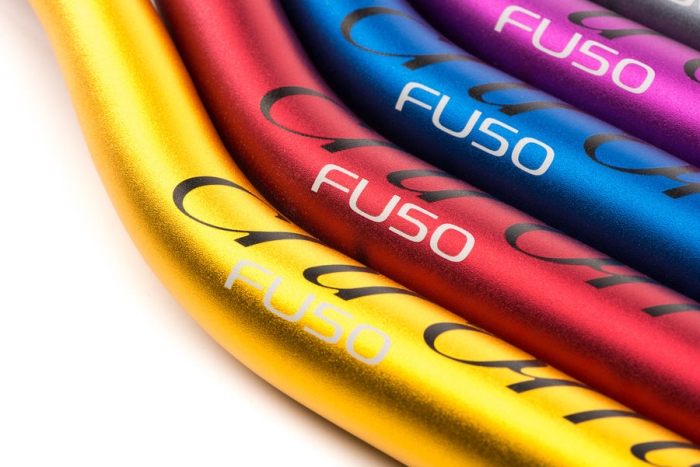
- Width: 800mm
- Rise: 50mm
- Scanning angle: 9°
- Material: 7075 aluminum alloy
- Clamp: 35mm
- Weight: 345g
- Type: Action
- What we like about it: Great color choices and very rigid.
- What we didn’t like about it: Weak cushioning.
Maybe you need a set of dazzling handlebars to conquer the jump park? Try the Chromag Fu50, these bars are made of lightweight multi-colored aluminum with a great selection of 6 colors. upsweep is taller to keep your torso at the optimal height for the downhill and very easy to master for the uphill. 800mm width is very stable and allows you to get into the air with precision on the intended trajectory.
However, since it is made of aluminum alloy, the weight of 345g is exaggerated. But for some jumping sports, rigidity is necessary. If you don’t have an intense jumping environment, you can choose the PRO Tharsis XC, which is the ultimate lightweight with good rigidity, but not suitable for jumping. If you are an extreme action rider then Chromag Fu50 Handlebar is your best choice.
8. BUCKLOS 25.4/31.8mm Handlebar Flat/Riser Bar ($39.99)
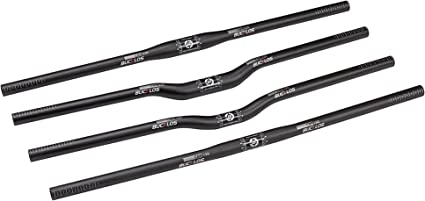
- Width: 660-780mm
- Rise: 50mm
- Scanning angle: \
- Material: aluminum alloy
- Clamp: 25.4/31.8mm
- Weight: 299g
- Type: Trail
- What we like about it: Cost-effective and sturdy material.
- What we don’t like about it: The diameter is somewhat backward.
This is a favorite of climbing riders. Unlike handlebars with more curvature, you only need to loosen a few screws on the Steel to mount the handlebar. The smaller curvature also makes it more suitable for climbing, with the body always at the right height and angle to prevent you from falling backward. Aluminum is very easy to maintain, unlike steel, which rusts easily.
However, I think its mounting diameter seems a bit backward. Most of the mainstream mountain bike handlebars in the market use 35mm to increase their strength. But this handlebar only provides 25.4/31.8 two kinds, for the old style can be upgraded. If you are the latest model of mountain bike recommended choosing another 35mm handlebar diameter. But if you are using the previous style and need some upgrades, this high-strength handlebar for climbing is a good companion for you.
Product link: https://www.amazon.com/BUCKLOS-Mountain-Handlebar-660-760mm-Suitable/dp/B09K46W4YG?th=1&psc=1
9. PNW Components Range Handlebar ($69)
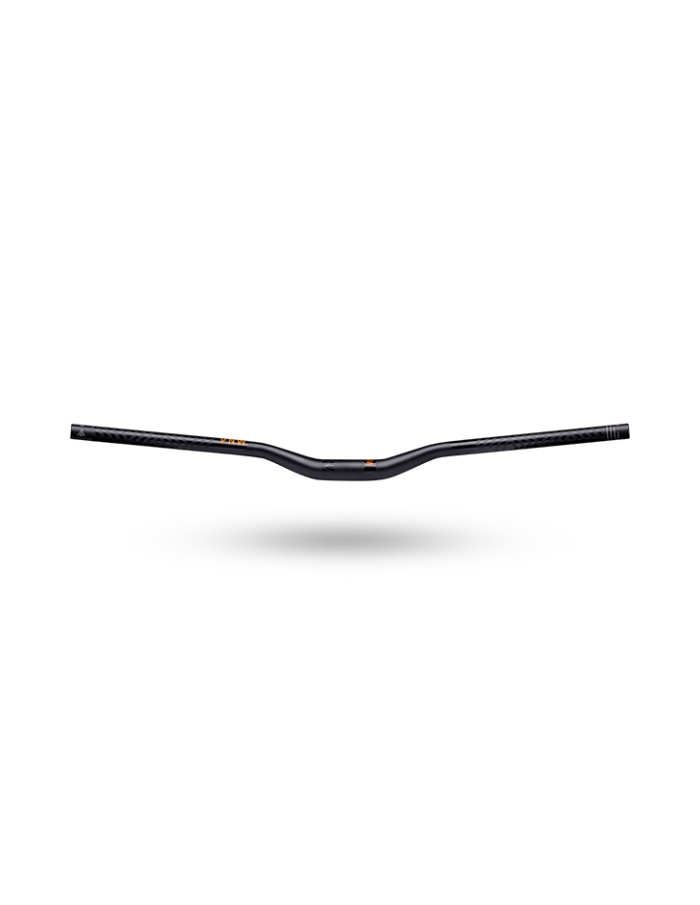
- Width: 800mm
- Rise: 50mm
- Scanning angle: 5º upsweep, 10º backsweep
- Material: 2014 aluminum alloy
- Clamp: 31.8mm
- Weight: 334g
- Type: Off-road
- What we like about it: Solid hardness.
- What we don’t like about it: The handlebar width is too wide and uncuttable.
Handlebars for climbing, for those XC mountain lovers. With a 10° backsweep and a 5° upsweep, you’ll always be in the right position when climbing. The handlebars are durable, with reinforcement installed to prevent breakage at stress-prone points. 800mm in length maximizes your control of the bike, and it allows you to pedal faster and farther.
The 800mm size is not acceptable to all riders. And there is no width cut point set, which may not be very friendly for those riders with narrower shoulders. If you’re exactly the type of person I’m talking about, check out the BUCKLOS handlebars above, available in a wide range of sizes from 660mm-780mm. But if you fit into the 800mm width as I do, the durable and climbing-friendly lever handlebars can add to your climbing process.
10. Renthal Fatbar Carbon 35 Handlebar ($173.9)
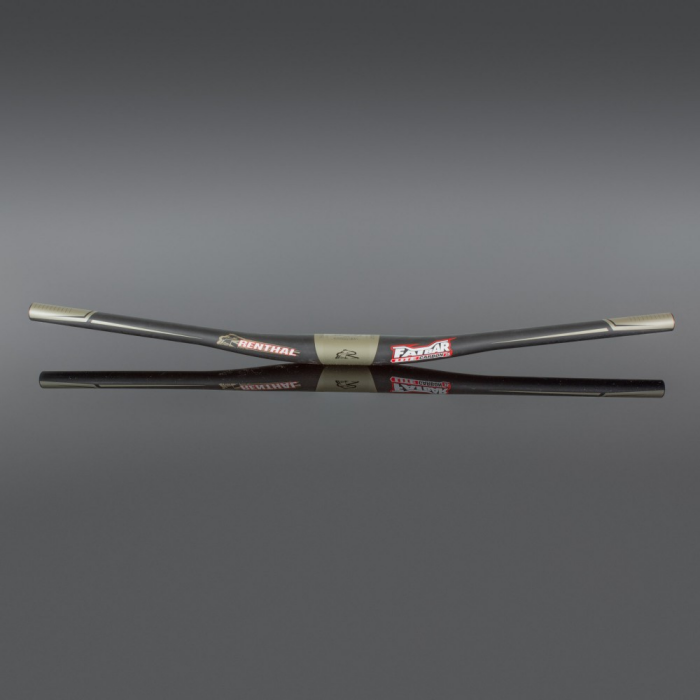
- Width: 760mm
- Rise: 10mm
- Scanning angle: 5º upsweep, 7º backsweep
- Material: Carbon
- Clamp: 35mm
- Weight: 190g
- Type: Off-road
- What we like about it: High strength and high rigidity while maintaining light weight.
- What we don’t like about it: It’s too stiff on the downhill.
Often seen on cross country and XC, it’s the ultimate blend of strength, stiffness, and damping. I think the best thing about it is that it comes with a rise option, and the 10mm-40mm option is suitable for most people. The single carbon fiber design makes it lighter and more durable. And the carbon comp is more compact than conventional, which also makes it stiffer than regular carbon handlebars.
But the stiffness doesn’t seem to suit all racers. Many downhill-focused racers claim that the handlebars are too stiff and make their palms feel numb when sprinting down hills. If what you need is a strong cushioned handlebar you can check out our Santa Cruz Carbon 800 Riser Bar It’s light and soft, but the climbing seems to be a bit hard. Anyway, this handlebar is suitable for those climbers, and the ultra-lightweight of the climbing handlebar makes it extremely lightweight. This is the more outstanding design.
11. Raceface Turbine R Riser Handlebar ($89.99)
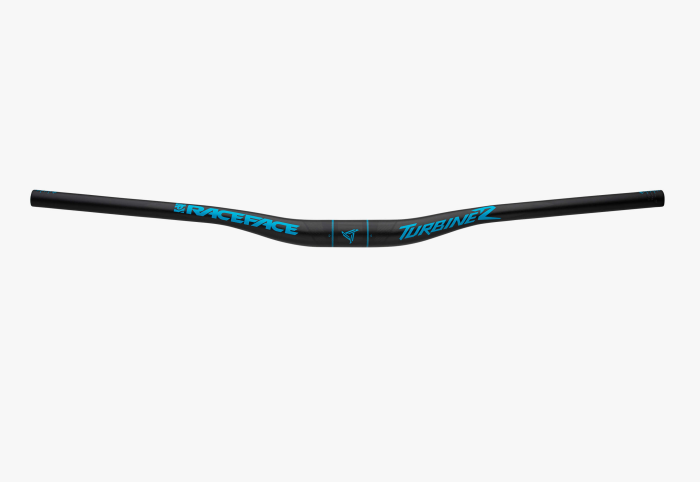
- Width: 800mm
- Rise: 20mm
- Scanning angle: 5º upsweep, 10º backsweep
- Material: Carbon
- Clamp: 35mm
- Weight: 190g
- Type: Off-road
- What we like about it: Comfortable to hold and maintains efficient output over long distances.
- What we don’t like about it: It’s a little stiff for an enduro handlebar.
The R-series handlebars of the Endurance Series can maintain efficient output on long rides. It will also give you a high degree of forgiveness if you are a rougher rider. That’s not all, the multiple options of three rise options 10mm, 20mm, and 35mm fit most people.
While it is comfortable enough compared to most XC mountain bike handlebars, it seems a bit stiff for an enduro handlebar. For the average enduro rider perhaps the PNW Range Gen 3 would be a better choice. But I’d say it’s definitely for the endurance crowd, and the strong response is very effective in gaining time on endurance rides.
12. RaceFace Respond Riser ($31.95)
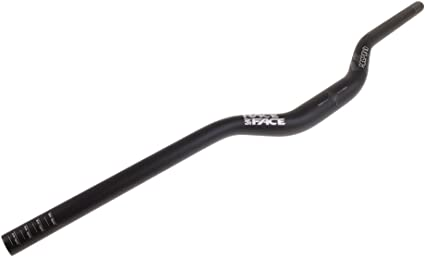
- Width: 785mm
- Rise: 20mm
- Scanning angle: 4º upsweep, 9º backsweep
- Material: aluminum alloy
- Clamp: 31.8mm
- Weight: 350g
- Type: Off-road
- What we like about it: Handlebars for descending and traversing, wider construction, and greater strength.
- What we don’t like about it: The handlebar surface is somewhat prone to wear.
Designed for DH/AM riders who are looking for great performance with mountain handlebar weight and a very low budget, the Respond stem is carefully designed with a wider construction and redesigned taper to provide greater width and stiffness, offering the best combination of strength stiffness, and weight.
However, most riders responded that the handlebars seemed to wear somewhat easily, and I was left with a very large number of scratches on my handlebars as I crossed the trails. This wasn’t very friendly and didn’t happen when I was using other handlebars. However, I have to say that there is no doubt about its performance, the quick response and high-strength steel tubing gave me an excellent riding experience.
13. UPANBIKE Mountain Bike Road Bike Handlebar ($24.99)
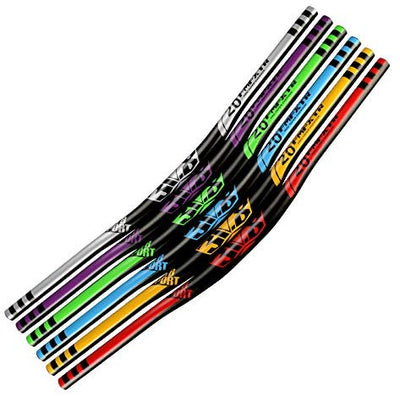
- Width: 720, 780mm
- Rise: \
- Scanning angle: 10º backsweep
- Material: 7075 aluminum alloy
- Clamp: 31.8mm
- Weight: 295g
- Type: Trail
- What we like about it: Rich color options, high strength, and corrosion resistance.
- What we don’t like about it: The angle is relatively straight and not suitable for descending riders.
A favorite of color lovers, up to six choices of handlebar colors can perfectly match your frame. Not only is it beautiful, but the high strength and corrosion resistance will keep it with you for a long time. The extra-long handlebar is marked with a cut-off line that allows you to cut the length at will. Not only mountain, 31.8 in length, and 295g lightweight design let many road enthusiasts also put it on their bikes. The most important thing is that the price is less than $25.
However, the handlebars seem to be too straight and the rise angle is very small. If you happen to be a DH rider, then I don’t recommend this handlebar for you. It’s not very good at getting effective control on very bumpy trails. But it can handle some forest trails very well for XC riders and riders who like to ride on the road.
14. OUTAD Bicycle Handlebar ($19.99)
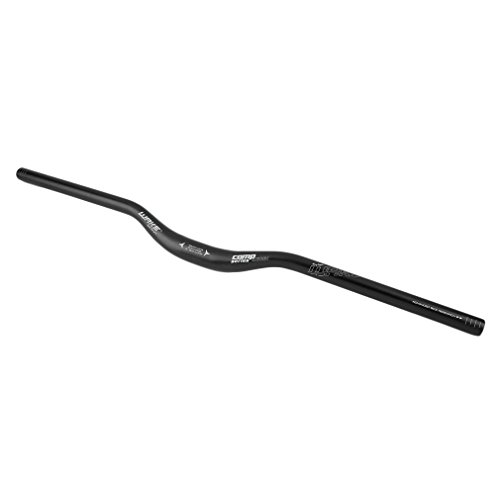
- Width: 720mm
- Rise: \
- Scanning angle: 10º backsweep
- Material: 7075 aluminum alloy
- Clamp: 31.8mm
- Weight: 295g
- Type: Trail
- What we like about it: Affordable price and very comfortable ergonomic design.
- What we don’t like about it: Doesn’t fit a single model, no strong points.
This handlebar is very affordable and the ergonomic structure makes it very comfortable to ride. The all-aluminum anodized finish protects the surface very well. The upward style allows your body to be slightly more performance-oriented forward. This handlebar is as versatile as the Swiss Army Knife you find on the market and can accommodate mountain bikes road bikes and long-distance touring bikes without any mistakes.
But this handlebar is not outstanding, not lightweight, and even only one color option. But it’s the best choice at this price point, you can’t even find a second durable and rigid handlebar. The very low maintenance cost makes it a good companion for a long time.
15. Jessica Acekit Handlebars For Mountain Bikes ($25.99)
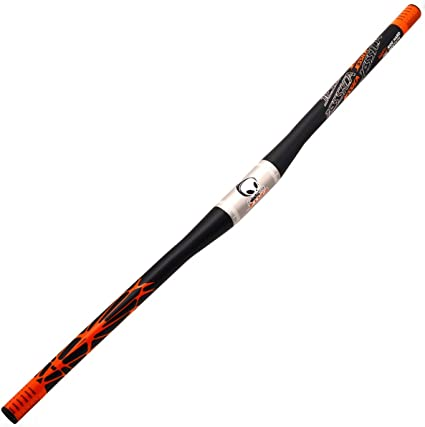
- Width: 760mm
- Rise: \
- Scanning angle: \
- Material: 6061 aluminum alloy
- Clamp: 31.8mm
- Weight: 305g
- Type: Downhill
- What we like about it: Lightweight aluminum alloy with good rigidity and weight retention.
- What we don’t like about it: The lack of rigidity of the aluminum alloy compared to the 7 Series is not suitable for racing.
Those who want to improve more than just the look and performance of their mountain bikes will find what they need in this handlebar. Compared to traditional 7-series tubing, 6061 aluminum will significantly improve the strength-to-weight ratio and overall stability. Most importantly the DB tube-pulling technology spreads the thickness to the point of stress. Suitable for use on XC\AM\FR and other mountain models.
However, it must be said that 6061 aluminum alloy is not as hard as 7075 aluminum alloy. It still feels noticeably softer when riding, and the soft feel unloads when doing intense climbing. If you are looking for a stiff handlebar, I would suggest looking at the above OUTAD Bicycle Handlebar. But if what you need is a lightweight cushioned handlebar and you won’t be doing intense off-roading, I think this is a good choice.
Mountain bike handlebar purchase advice.
- Handlebar material: carbon fiber and aluminum
- Off-road handlebars vs. trail handlebars vs. downhill handlebars
- How wide should I choose the handlebars
- What are handlebar sweep and rise?
- How to choose the diameter of the handlebar
Handlebar material: carbon fiber and aluminum
Mountain bike handlebars are often made of aluminum or carbon fiber, and you can also choose titanium handlebars, but that’s not common.
Aluminum is the most popular material for the same reason as most popular frame materials: lighter weight durability and very inexpensive. It can withstand bumps and tumbles very well and will not break.
Carbon fiber handlebars have some advantages over aluminum. The layering means better shock absorption and reduced hand fatigue. And the material tends to be lighter, which is a key concern for professional riders. But its only drawback is the cost, and it’s not as durable as aluminum on bumpy roads.
Off-road handlebars vs. trail handlebars vs. downhill handlebars
Off-road handlebars
Cross-country handlebars tend to be very flat or have very little rise and sweep back angle. This is good for maintaining overall handling speed and ensuring that the rider has enough weight on the front of the bike, which will help put you in a better position to climb.
If you’re looking for a lightweight, some XC handlebars are also set up with a handlebar Steel one-piece design to reduce overall weight. This trend is borrowed from the latest aerodynamic principles.
Trail handlebars
Woodland handlebars are often very diverse, which is not surprising considering the varied terrain of woodland trails. The width of a trail handlebar is wider than a trail handlebar, placing more emphasis on downhill terrain and control stability. 780mm or even 800mm handlebars are not uncommon on trail handlebars, and the extra width keeps you comfortable in the saddle during long rides.
Downhill handlebars
This is the type of width that matters most, with the extra control and stability needed for high-speed descents. Downhill handlebars are sometimes over 800mm, but you can sometimes see 750mm or even shorter handlebars on professional riders. And downhill handlebars often have the maximum rise (up to 40mm), helping the rider to lift the front of the bike over obstacles and put as much weight as possible on the rear wheel.
How wide should I choose the handlebars?
In recent years, mountain bike handlebars have gradually become wider, and the wider the handlebars can improve the control of the mountain bike to a greater extent. Some people also believe that this design can open up the chest cavity to make it easier to breathe
The wider the handlebars the more precise the entry angle, which is important for fast riders to choose the right line quickly. The longer leverage effect also reduces the vibration transmitted to the hand during turns or bumps.
What are handlebar sweep and rise?
Rise, upsweep, and backsweep are the handlebar geometry angles we need to consider.
RISE
The cylindrical steel tube is flat from one end to the other.RISE refers to the rise from the center of the handlebar to the sides of the handlebar and refers to the vertical distance from the centerline of the handlebar to the valve stem clamp at the tip.
A higher distance means a more vertical ride position with an overall rearward center of gravity, commonly found on downhill handlebars. A shorter distance also means a more aggressive geometry with a forward center of gravity, suitable for forest road shuttles and climbers.
UPSWEEP
Upsweep is the angle at which the handlebar breaks upward between the handlebar and the top of the handlebar, with the horizontal angle in place.
More upsweep provides more wrist rotation, meaning greater angular variation when swinging the handlebars from side to side. Looking at the front of the bike, most handlebars keep the upsweep at about 5°.
BACKSWEEP
Backsweep measures the backward swing angle from the handlebar perpendicular to the stem, measured in degrees. More backsweep means shorter handlebars to use and a more comfortable angle for the wrist.
How to choose the diameter of the handlebar
There is only one caliber for mountain bike handlebar ends, 22.22mm, which means you can change grips at will. But the calibers of the clamps are different, including the common 31.8mm or the more advanced 35mm, but also the 27.2mm caliber on vintage bikes. If you want to change the grip, please make sure your grip is compatible with Steel’s caliber first.
The mountain bike industry has always favored 35mm, especially on DH and enduro bikes, but 31.8 calibers are still common. A 35mm diameter handlebar has more strength and gives a more direct feel in aggressive steering. However, the 31.8 diameter allows for added comfort.
Summary
The handlebar is the most important contact point on a mountain bike. While many riders are satisfied with stock handlebars on their bikes, the right upgrades can dramatically improve the overall performance of the bike and show more skill on the trails. By the way, if you want to go riding in well-known terrain or special terrain, you can book your accommodation on IHG Hotels & Resorts. It is not only rich in variety but also easy to operate.
In this test, we have selected 15 mountain bike handlebars based on usage and material. Whether it’s trail handlebars for a wide range of applications Santa Cruz Carbon 800 Riser Bar or woodland handlebars for newbies UPANBIKE Mountain Bike Road Bike Handlebar, or downhill handlebars that focus on downhill Jessica Acekit Handlebars For Mountain Bikes There are a variety of price points and different diameters and styles, there is always one that is suitable for you.
If you like our content, feel free to share it with your friends. If our content is helpful to you, you can click the email subscribe button below!

